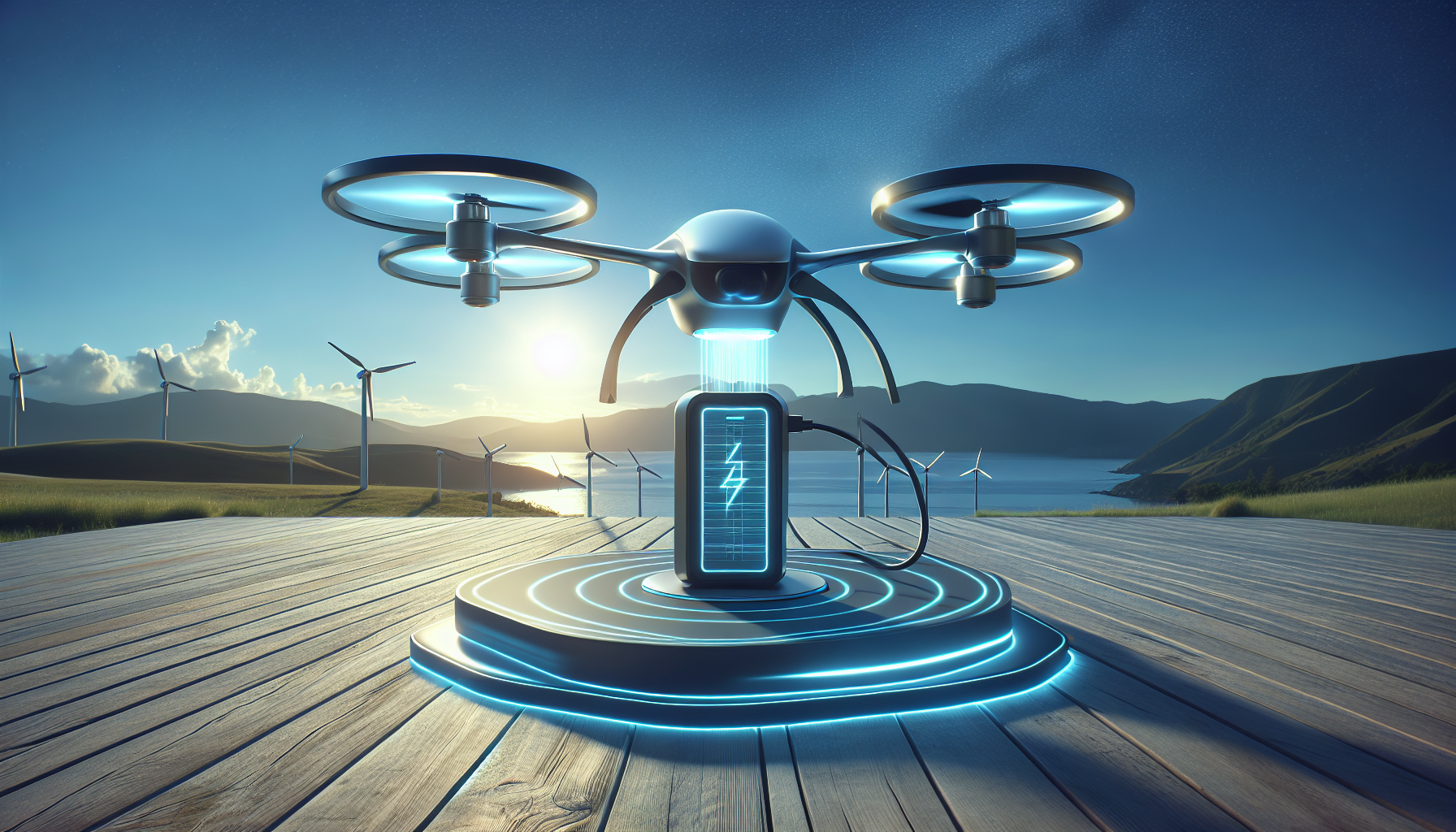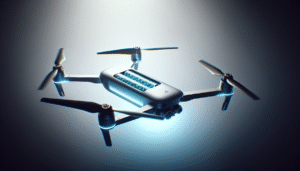Do you wonder how drones manage to recharge without human intervention, flying tirelessly in their missions and then seamlessly continuing their tasks? The magic behind this is brought to life by autonomous drone charging stations, a marvel of modern technology that promises an era of unprecedented convenience and efficiency. As you and I embark on this journey of discovery, we’re not just looking at how these stations work but also exploring some fascinating case studies that showcase their practical applications.

The Basics of Autonomous Drone Charging
In this enchanting world of technology, drones have become synonymous with innovation and versatility. From delivering packages to capturing breathtaking aerial footage, they play an integral role in many industries. However, their utility would be significantly curtailed if it weren’t for the ability to recharge independently. The concept of autonomous drone charging stations is the answer to this challenge, enabling drones to recharge seamlessly without human intervention.
What is an Autonomous Drone Charging Station?
Imagine a tiny garage meant exclusively for drones. These stations serve as a pit stop where drones can rest and rejuvenate their batteries for their next flight. At their core, autonomous drone charging stations are designed to provide efficient, unattended recharging through various innovative technologies.
How Do They Work?
Typically, these systems involve a docking mechanism that aligns the drone with the charging station. Some stations use contact-based charging, where the drone physically connects with the dock, while others utilize wireless technology such as induction charging. The process isn’t just about plugging in for power – it’s an automated ballet of precision alignment, energy transfer, and data exchange.
Key Components of Drone Charging Stations
Understanding the nuances of autonomous drone charging stations involves delving into their critical components. Each part plays a vital role in ensuring the system works seamlessly.
| Component | Function |
|---|---|
| Docking System | Aligns and secures the drone for charging. |
| Charging Base | Facilitates energy transfer, can be contact-based or wireless. |
| Control Software | Manages the charging process and ensures optimal energy usage. |
| Sensors | Systems for navigation, docking alignment, and safety. |
Docking System
The docking system is akin to a polite concierge ensuring the drone is perfectly aligned and secured. With advanced sensors and guidance systems, the drone descends onto its docking pad, where mechanical or magnetic docks hold it in place.
Charging Base
The charging base functions like the fuel station of old. Depending on the technology, drones may need to dock physically, making direct electrical contact. Alternatively, more advanced systems might use wireless methods, akin to how you might charge your smartphone by simply placing it on a pad.
Control Software
Now, imagine the maestro conducting this entire orchestra. That’s the control software, ensuring everything happens without a hitch. It manages energy flow, monitors charging progress, and ensures the drone’s battery health is optimal. Most importantly, it ensures everything is running smoothly and efficiently – like me taking care of the perfect boiling time for my morning coffee.
Advantages of Autonomous Drone Charging
So, what’s all the fuss about? Why should we be excited about drones charging autonomously? The benefits are multifaceted and deeply impactful.
Efficiency and Convenience
One of the most obvious advantages is the sheer convenience these systems offer. By removing the need for frequent human intervention, operations become smoother and more time-efficient. This autonomy enables drones to operate more like a seamless part of a well-oiled machine, rather than fiery renegades going off-grid every couple of hours.
Cost-Effective
Over time, autonomous charging stations reduce labor costs. They eliminate the need for personnel to monitor and charge drones manually, thus allowing companies to focus on more critical strategic tasks, flipping the economics of drone operations in favor of greater savings.
Environmental Impact
These stations may also be a stepping stone toward sustainability. With optimized energy management, these systems can potentially use renewable energy sources, thus playing a part in reducing carbon footprints.
Case Studies of Autonomous Drone Charging
Reality offers the best stage upon which we can see theories turn into practice. Now, let’s take a peek into some case studies where autonomous drone charging stations have been implemented, and the impact they’ve had.
Case Study 1: Urban Drone Deliveries
Consider a bustling city teeming with activity. In this scenario, a drone fleet responsible for package delivery utilizes autonomous charging stations strategically placed around the city. This integration allows drones to efficiently perform deliveries, recharge quickly, and maintain a continuous flow of service throughout the day. The result? Significantly reduced delivery times and increased customer satisfaction.
Case Study 2: Agricultural Surveillance
In vast agricultural fields, drones equipped with sensors monitor crop health and growth. Here, autonomous charging stations placed in field corners play a crucial role. They ensure that drones don’t spend much time grounded, thereby maximizing the time spent monitoring. This efficient cycle helps farmers respond to issues faster, aiding them in improving crop yields.
Case Study 3: Search and Rescue Operations
Imagine a mountainous region where search and rescue drones need to be operational around the clock. Here, autonomous charging stations, perhaps solar-powered, can be set up along the search paths. This ensures that the drones remain operational during critical missions, drastically enhancing the ability to save lives when every second counts.
Challenges and Considerations
As we marvel at this technology, it’s worth acknowledging the challenges it poses. After all, nothing is without its quirks.
Infrastructure Costs
Setting up these charging stations requires a significant upfront investment, with considerations for the specific environment in which they will operate. Such investments might be daunting initially, although, with time, the efficiency gains promise to offset these costs.
Technological Limitations
Keeping pace with rapid technological changes poses another challenge. As drones evolve, so must the stations supporting them. Ensuring compatibility between devices and adapting to advancements can be complex.
Regulatory and Safety Concerns
In my mind, I picture cautious mothers watching drones as if they were toddlers on a playground. Ensuring drones don’t cause harm during autonomous operations poses regulatory hurdles. Establishing guidelines and safety protocols remains crucial to broader acceptance.
The Future of Autonomous Drone Charging
Where do we go from here? Autonomous drone charging stations represent a paradigm shift in how we think about machine autonomy and technological synergy.
Integration with Smart Cities
As cities get smarter, the integration of autonomous drone charging stations could be seamless. Drones could become ubiquitous urban elements, serving not only deliveries but also emergency services, surveillance, and even urban planning tasks.
Renewable Energy Sources
The future gleams bright with the potential use of renewable energy sources. Imagine drones recharging at solar-powered stations, truly embodying the ideals of sustainability and green technology.
Improved Autonomy and AI
The blend of AI and drones continues to evolve, enhancing autonomy. Future stations may not only charge drones but also repair minor damage or recalibrate sensors, leading to even greater efficiency and operational throughput.
Conclusion
In this tech-laden journey, autonomous drone charging stations emerge as vital facilitators of progress. They empower drones to achieve their full potential by not only embracing autonomy but also weaving it seamlessly into the fabric of their operation.
Our understanding of this technology opens doors to endless possibilities, from enhanced industrial applications to supporting ambitious visions of AI-driven networks. It’s this reality that you, and I, bear witness to – a testament to human ingenuity and the wonders it can achieve when combined with relentless curiosity and innovation.
These charging stations are more than just a convenience; they are a glimpse into a future where autonomous systems redefine what’s possible. Through their practical applications and continuous improvement, they promise to serve as a cornerstone of tomorrow’s technological advancements.


